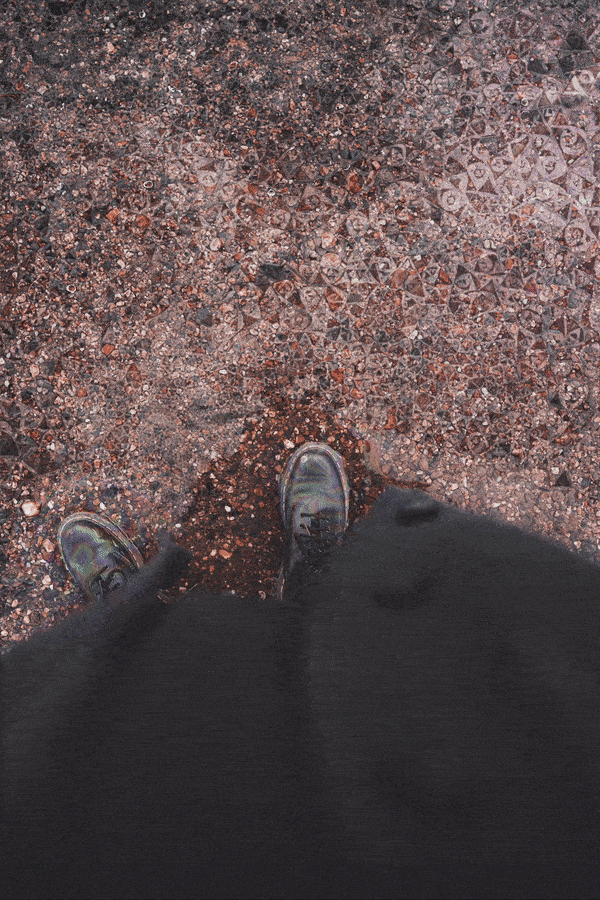What is HPPD (Hallucinogen Persisting Perception Disorder)?
What causes HPPD? What does HPPD look like? And other questions
Hallucinogen Persisting Perception Disorder is a DSM-5-listed condition in which people experience lasting, debilitating changes to their visual perception after using drugs, especially psychedelic drugs.
To meet the criteria for a diagnosis for HPPD, these changes should:
Create distress and impairment to quality of life
Not be attributable to something else like schizophrenia, head injury, or brain infection
Occur after the consumption of drugs, especially psychedelic drugs
These visual perceptual effects seem to arise especially after people use classic psychedelic drugs like LSD, magic mushrooms, and DMT, but they also arise with related (but not classically psychedelic) drugs like MDMA, cannabis, ketamine, dextromethorphan (DXM), diphenhydramine (DPH), and new suites of Novel Psychoactive Substances (NPS). Some people even report the onset of HPPD-style changes after using SSRI antidepressants and antibiotics.
These changes are speculated to occur in two types: Type-1, in sudden (usually benign) flashbacks, and Type-2, in persistent changes to everyday perception.
While HPPD is a complex, under-researched, and highly subjective condition, people consistently report similar kinds of changes. If you have experienced some of these changes - and they began noticeably after taking drugs - then this may be suggestive of HPPD and the need for further clinical consultation.
Visual snow, geometric forms, flashes of colour, and other psychedelic phenomena associated with HPPD
What are the symptoms of HPPD? What does HPPD look like?
Visual snow: When the field of vision is coated with small, grainy dots like the static of an undialed TV
Haloes: When light sources have a bright ‘halo’ or ‘aura’ ring around them
Haloes around objects
Trails: When an object moves, a trail of faint replicated images follows it
After-images: When an image of an object lingers after looking away, either the same or of a different colour
Changes to size and depth perception: Things can seem smaller, ‘at-a-distance’, or possessing a two-dimensional quality
Assorted psychedelic-style effects, such as seeing fractals, kaleidoscopic patterns, faces, ‘breathing’ walls, moving, ‘wavy’ or shaky text, or flashing and strobing lights
People with HPPD report other, non-visual changes, too:
Physical effects, such as head pressure or tingling sensations throughout the body
Tinnitus and ringing of the ears
Confused and unclear thoughts
Depersonalization/derealization (DP/DR), in which people feel detached from their bodies and the world stops feeling real
A depiction of haloes, blurring and visual snow associated with HPPD
What helps HPPD?
‘Folk wisdom’ in HPPD communities suggests that cultivating an attitude of ‘acceptance’ helps to prevent the symptoms overtaking sufferers’ lives. Accepting that the visual symptoms ‘are as they are’ in any one moment may be critical in reducing anxiety.
The more sufferers ‘monitor’ and fixate on their symptoms and their implications - how their lives are now ‘ruined’, how they ‘did this to themselves’ - the more apparent and disturbing the symptoms will appear. In this respect, early psychotherapeutic evidence suggests that strategies found in Cognitive Behavioral Therapy (CBT), and Acceptance and Commitment Therapy (ACT) may be considerably helpful.
Lifestyle changes may also relieve the suffering and symptoms associated with HPPD.
Regular exercise
A healthier and better-rounded diet
Plenty of water
High quality and consistent sleep
Reductions in stress and dealing with wider mental health problems
Relaxation and attention-training techniques like mindfulness meditation
Abstinence is also encouraged for those experiencing the effects of HPPD, at least for those struggling with the condition or first experiencing its effects. Continuing to use drugs will not necessarily make the symptoms considerably worse, but a considerable risk still remains. Note, further psychedelic use has helped to relieve some people’s HPPD, but scientific research on the potential of psychedelic re-administration has never been conducted.
Pharmaceutical drugs may have their place for some sufferers, including benzodiazepines like Klonopin and anticonvulsants like Lamotrigine or Keppra. While they work for many patients in reducing the intensity of their visual changes - and their associated anxiety - they come with possible side-effects and are not curative. Some may experience a deterioration rather than relief in symptoms.
Promise has emerged around the use of brain stimulation techniques, though this requires further research.
Visual snow and illusions of movement
How long does HPPD last for?
How long HPPD lasts for is not a question with a simple answer. People's experiences are incredibly wide-ranging. It is likely that those following the advice outlined in ‘What helps people with HPPD?’ will recover sooner. Dr. Henry Abraham suggested in 2001 that half of people who saw him clinically recovered from HPPD within five years.
Some people experience these changes for a few weeks or months, before they naturally die down; others experience them for many years, including case reports of people with HPPD for more than forty years.
We do not know which lengths are most common, or what precise conditions are at play in shaping them: including the diversifying effects of genetics, lifestyle choices, people’s subjective psychological and physiological makeup, their ongoing drug use, or the nature of the drug experience that triggered the condition.




